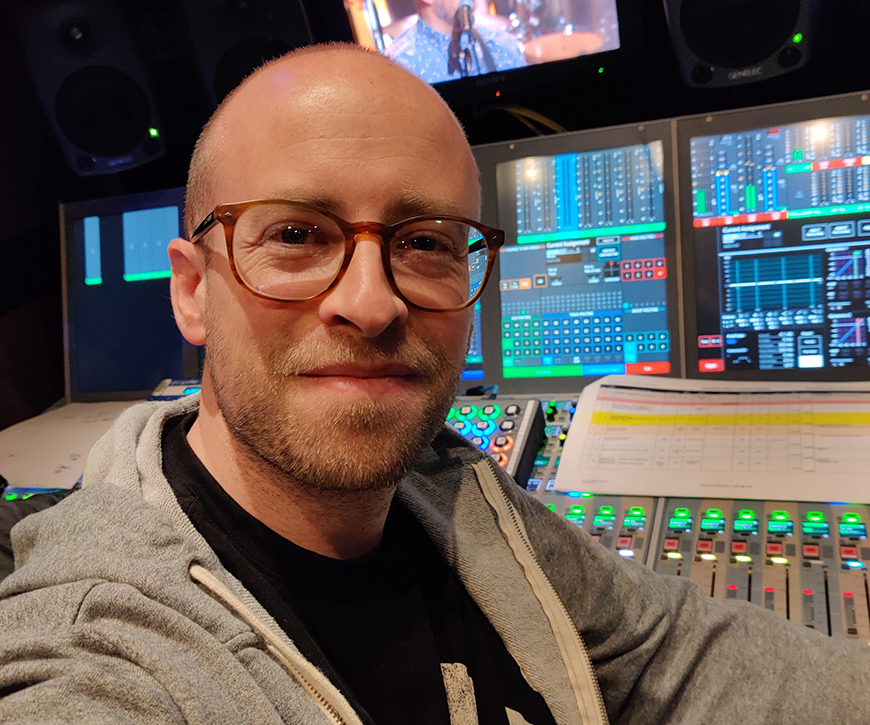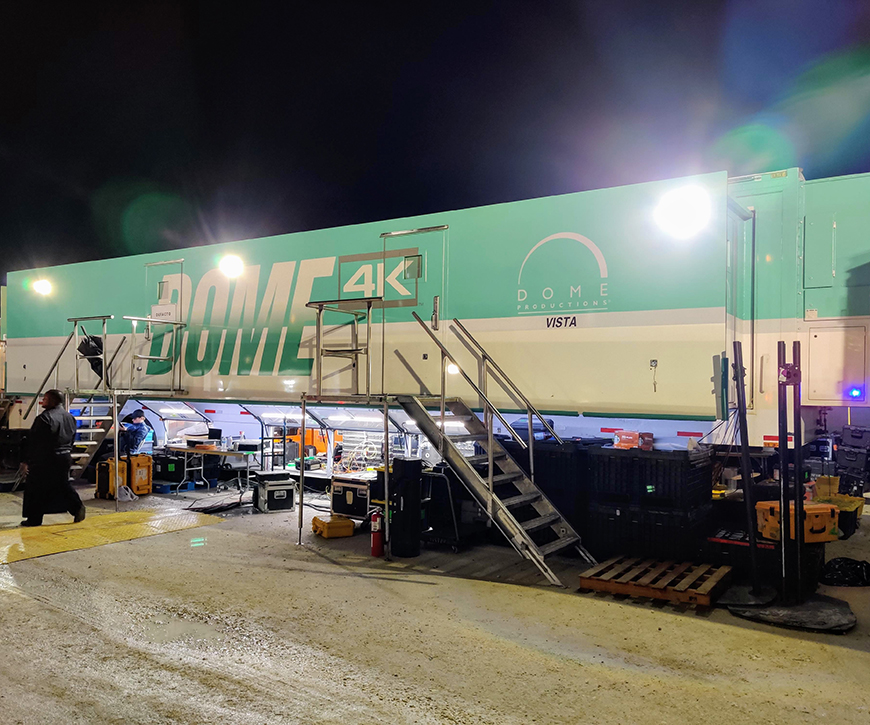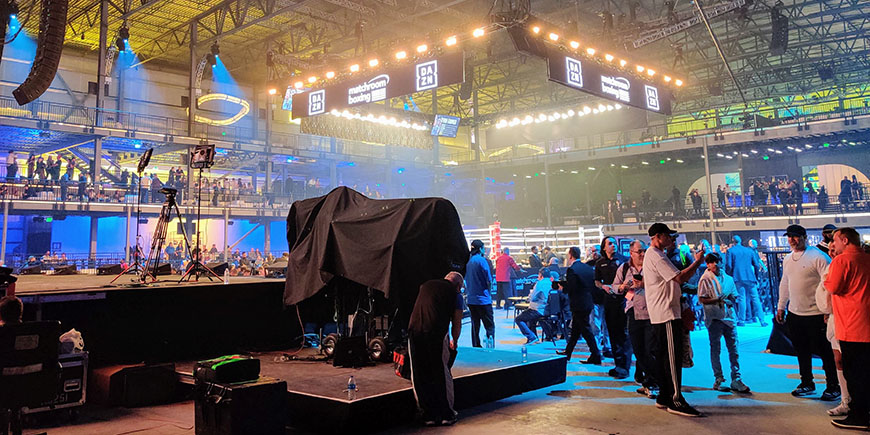As even the most casual of sports fans know, the Super Bowl is a huge event in the sporting calendar and has long since expanded beyond the game itself into a full weekend of entertainment. This year saw Dome Productions contracted to supply OB services for the AT&T Super Saturday Night with Lady Gaga event, with myself acting as Audio Guarantor. This was a great win for Dome Productions and, speaking personally, it’s been the most exciting job of my career so far.
The event took place at the Island Gardens in Miami, Florida and Dome Productions was chose as the OB truck provider. Our vast history in OB productions and the capabilities of our newest 4K truck, Dome Vista, helped us handle three separate event nights including a live Boxing event and multi-artist concert, though it was the Lady Gaga show that was far and away the most complex in terms of the services we provided.
Despite its 4K video capabilities, this article is about the audio side of things with the concert “streamed” live on Twitter. So what, you may ask, is the role of an Audio Guarantor? I like to think of it as a Systems Tech in the PA World. I was responsible for the technical planning, setup/routing of the Calrec Apollo 144-fader console, all the audio mapping to/from the two multi-track recorders, and ensuring everything worked 100 per cent for the two audio mixers on this show.
What was immediately different, at least for me with this gig, was the fact that the audio took priority.
We had all the dedicated audio resources we needed along with the time and effort required to set them up. I had people helping me to make sure the audio was as good as can be with technical resources to make sure that everything went brilliantly in that regard. That was great, considering that in sports broadcasts, audio is often the second most important thing.
For Lady Gaga, looking at the technical details, we received three 56-channel MADI streams from the FOH DiGiCo console over coax; 32 analogue stems via a Calrec Hydra2 48×16 Stage Box over fibre; and a two-channel board mix via analogue DT-12. The total count from FOH was 202 channels of audio. We added our own audience response mics to complement the ones provided by FOH and had microphones on three cameras and two EVS machines for the open and close videos with a stereo return feed from Twitter for monitoring.
Her band and her production used a lot of live instruments. As an example, including electronic pads, there were 22 channels just for drums: two kick drum mics; three snares (mic’d top and bottom); two hi-hats; a number of rack toms and floor toms that were all individually mic’d; a ride-specific mic; overhead mics; and two stereo drum pads.
There were a number of different bass keys and a bass DI – so that was another six channels just for bass. There were two guitarists who both had their cabinets mic’d and a Kemper digital amp modeling system so they could quickly change their tone from song to song. Each had their own system and microphones. Then there were four synths, all stereo. Lady Gaga also had a lot of her own instruments – an acoustic guitar, bass guitar, a keytar and a piano. She also had four different vocal mics/headsets while the dancers all had headset mics as well.
The show also included a lot of channels for playback — 32-channels in total, including background vocals, playback drums, keys, bass, synths, etc. These are pre-recorded backing tracks. There were also a lot of triggers and comms coming to us – plus some instruments that weren’t going to be used in the show – so we didn’t take those as we had no need. We took stereo stems of a lot of the instruments to make our mix easier, but we ended up doing our own mix of the drums and bass from the individual mics.




